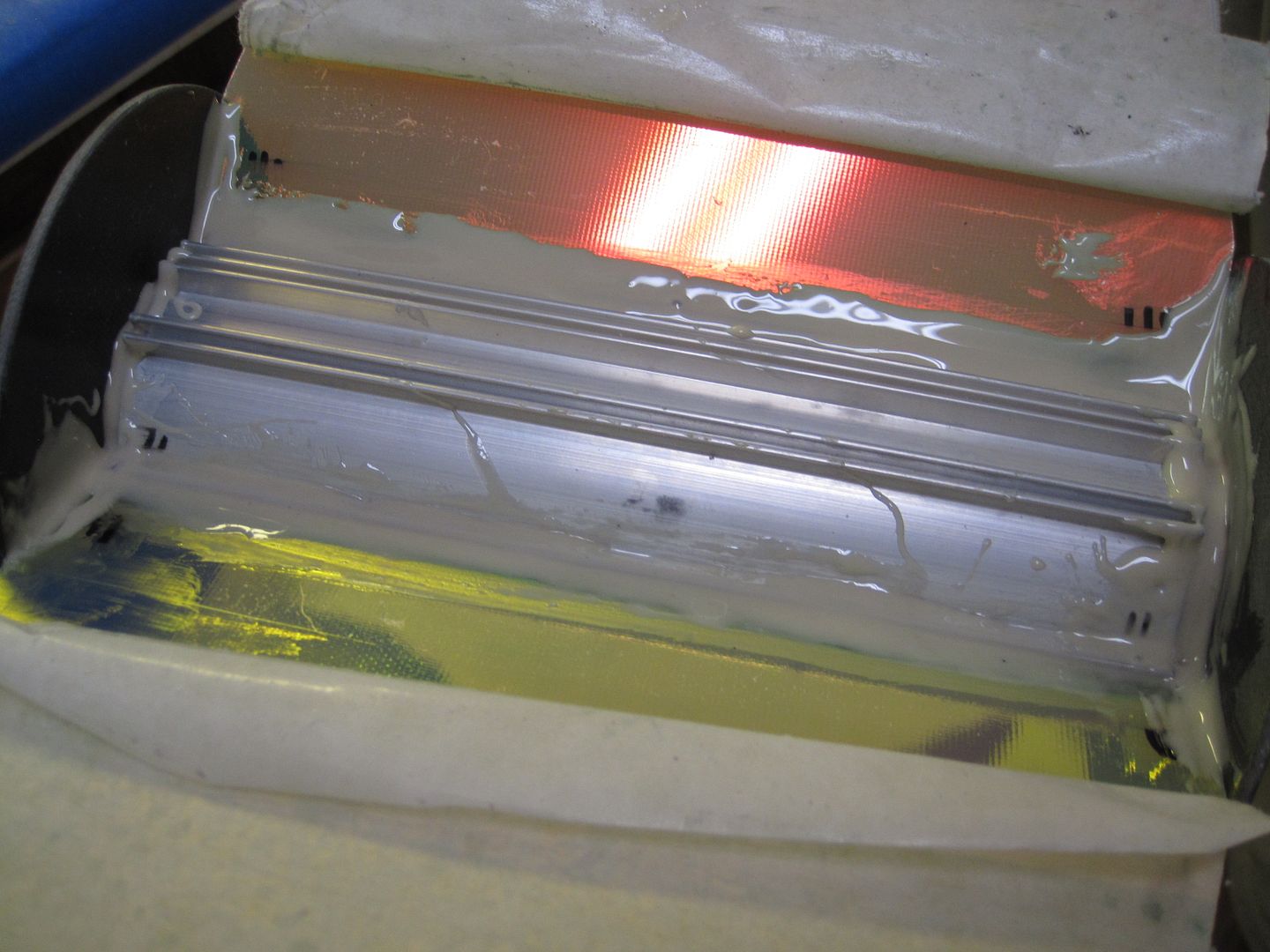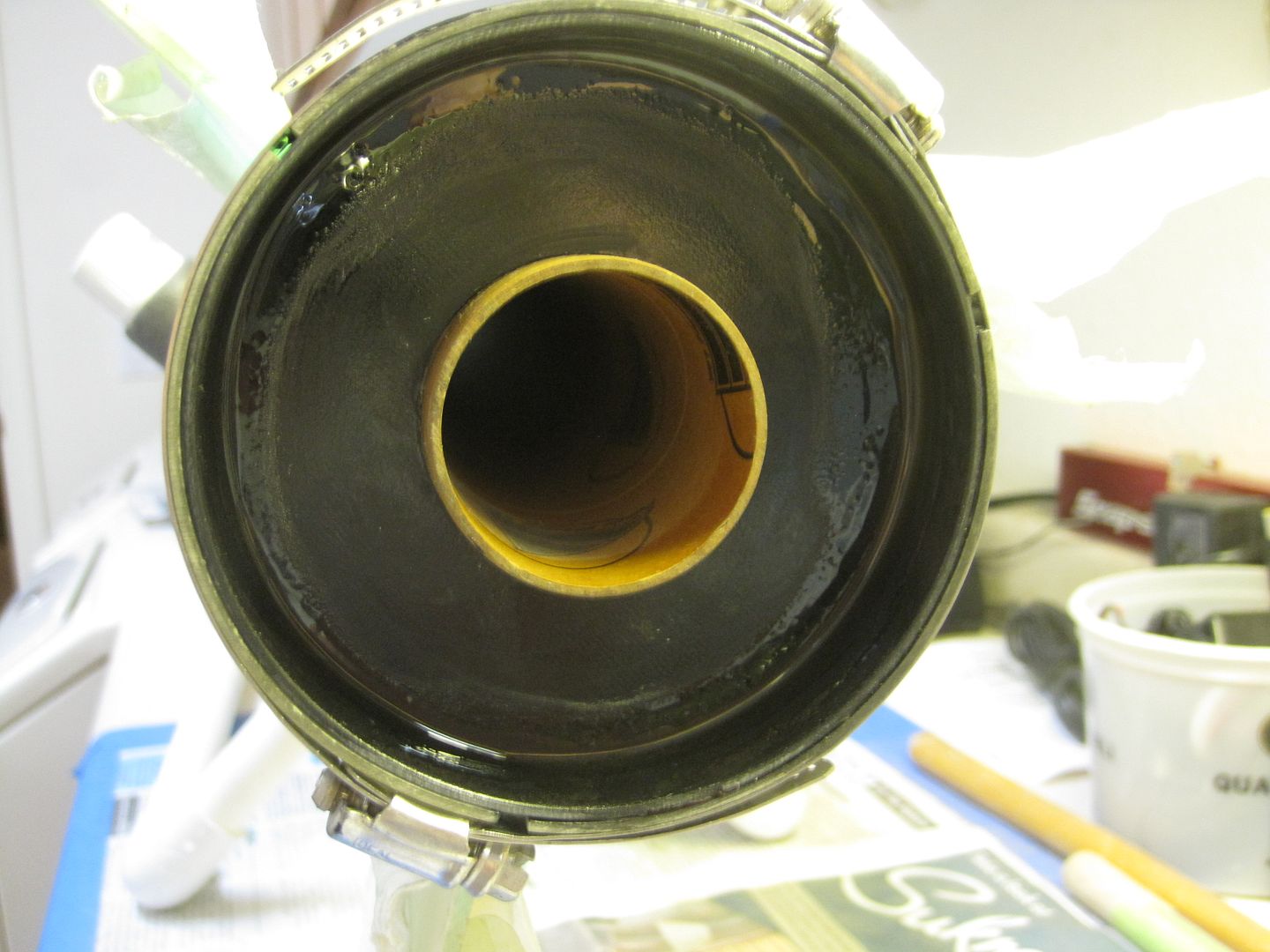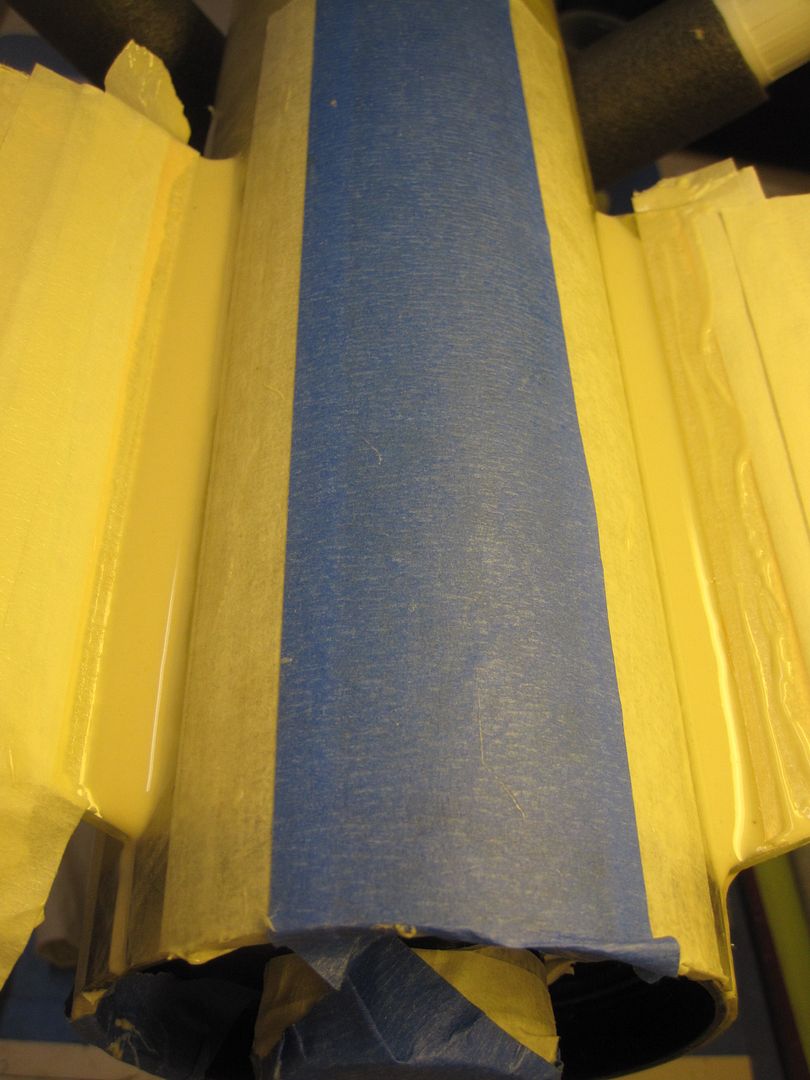Quick comment on injection, I personally don't like drilling injection holes in my FW tubes (making stress concentration holes right next to the slots doesn't do it for me) also trying to make sure everything inside is "leak proof" you know where every part has to be butted up together so no epoxy leaking though the motor centering rings can occur is difficult, tedious and time consuming and do not find any advantages to using the “injection" method, also I like to be able to see the internal fillets when finished, with injection method using black or colored FW tube this is not possible. I think this was originally developed because it was basically the only way you could do it when using the thin runny epoxies, I find it much easier to simply use a 1/8” to ¼” diameter wooden dowel to build my internal fin fillets laying the rocket horizontal and going in through the bottom and attaching the motor mount rear ring on afterwards, really this is pretty fast once you get the hang of it, you simply just dip the end of the dowel into the mixed rocketpoxy twirl it a little to build up on the dowel, then go in the aft side of the rocket and twirl the Rocketpoxy into the fillet locations, you can see the internal fillets when finished and make them exactly how thick you want them, no guessing. I have even done minimum diameter rockets this way as well. I do four fillets per 120 degree rotation (for a 3 fin rocket), the two internal fillets on the bottom single fin, and the top two internal fillets on the two top fins per rotation, (or if you really want to speed things up and are quite coordinated you can also do the two external top fin fillets as well at this time). Do this three times and you done with the most unbelievable rocket strength, no drill holes, I don’t need any stinking holes, See photo.

With that being said yes you can inject Rocketpoxy and it will flow. The Rocketpoxy was designed to give you about three viscosities to work within a single epoxy product. From the time you first mix it for about the first 0 to 20 minutes it will flow freely and self level pretty well and can be poured directly from a cup or put into a syringe with a decent size dispense spout and injected quite well, especially if you have a larger size opening (1/8”diameter or more) or very easy if using a pneumatic dispenser, with this device a piston is forced by air pressure down into the syringe to push out the product, you can easily do very thick materials this way. If you want it to be a little flowable but really with no sags or runs but still trowels well and smooth (such as when doing a fin fillet) use it from about 30 to 45 minutes later after mixing, if you want to use it like a very thick epoxy putty wait after about 45 to 60 minutes and dip you fingers in isopropyl alcohol and you can pinch out an amount and roll into a ball or any shape and press into threads or a hole to repair. You can use up to 1 hour after mixing. Keep in mind the above is approximately and your exact conditions may need to be adjusted slightly, the temperature the epoxy is mixed at and the amount mixed will affect this (will cure faster in a 90 Degree F shop then a 60 degree F shop and will cure faster if mixing a very larger amount).
I am blessed that I have lots of different adhesive dispensing equipment at my location to play with, for example I have some pneumatic syringe epoxy bench top dispensers that luckily we manufacturer that work great for this. I have even rigged up a 12 inch long piece of 1/8” ID tube that I connect to as 55 cc syringe that I fill with mixed Rocketpoxy that I can use to place internal and external fillets on really big rockets in no time at all and very accurate and consistent. I have also put into a dual cartridge holder using a pneumatic dual cartridge gun with a static mix tube nozzle on the end, this way you don’t even have to mix it, it comes out fully mixed and ready to use. If there is some interest to do it this way we could also pack Rocketpoxy in dual cartridges. See photos below. The 2nd photo is a pretty inexpensive way to make a pneumatic syringe dispenser, all you need is a simple pneumatic foot switch and a 0 to 100 psi regulator w/gauge and hook up a couple of pieces of tubing with a syringe holder, all you need is a simple air compressor to connect to it, usually about 20 to 30 PSI will dispense the Rocketpoxy very easily. If interested my company also sells the completed assembly or for the do it yourself types any of the parts you would need to make this simple syringe dispenser.




Glenmarc Industries, Inc.





















